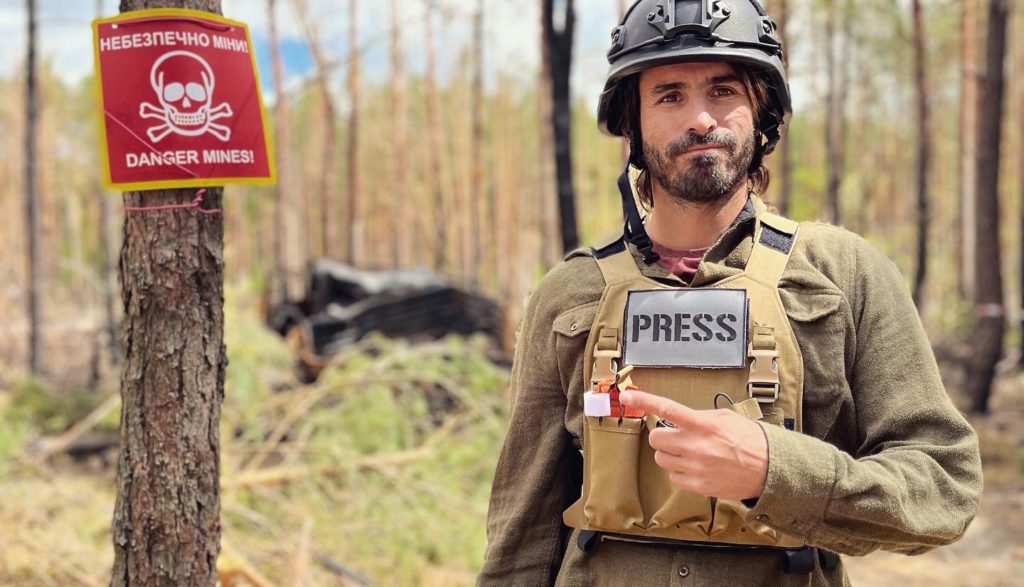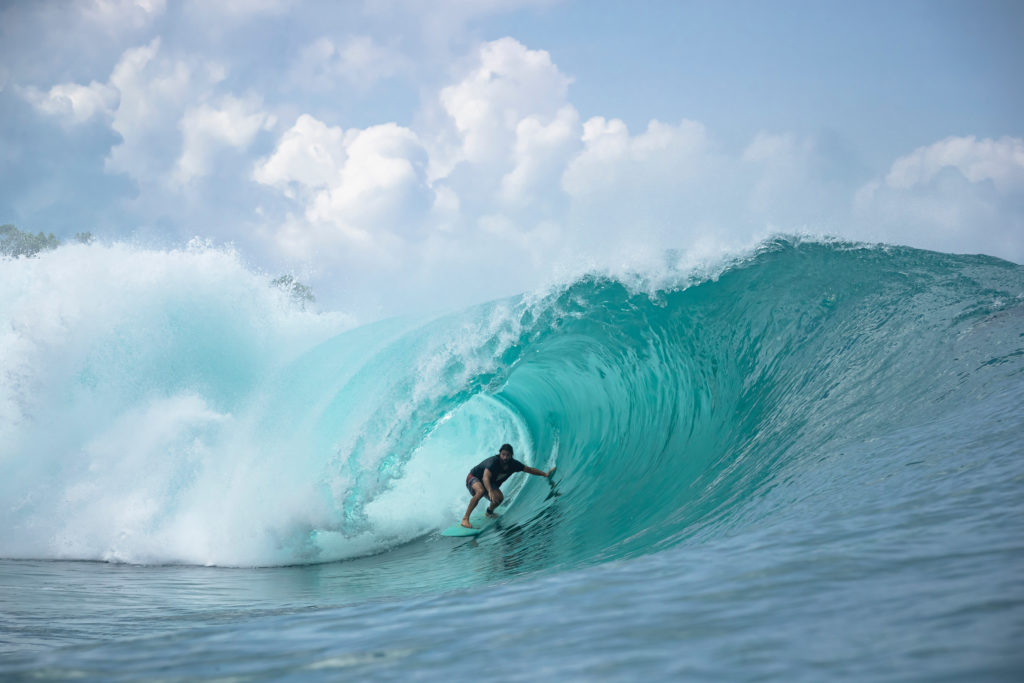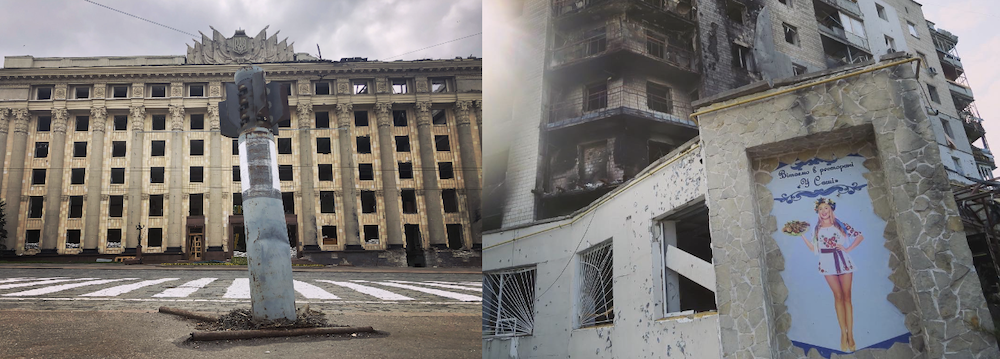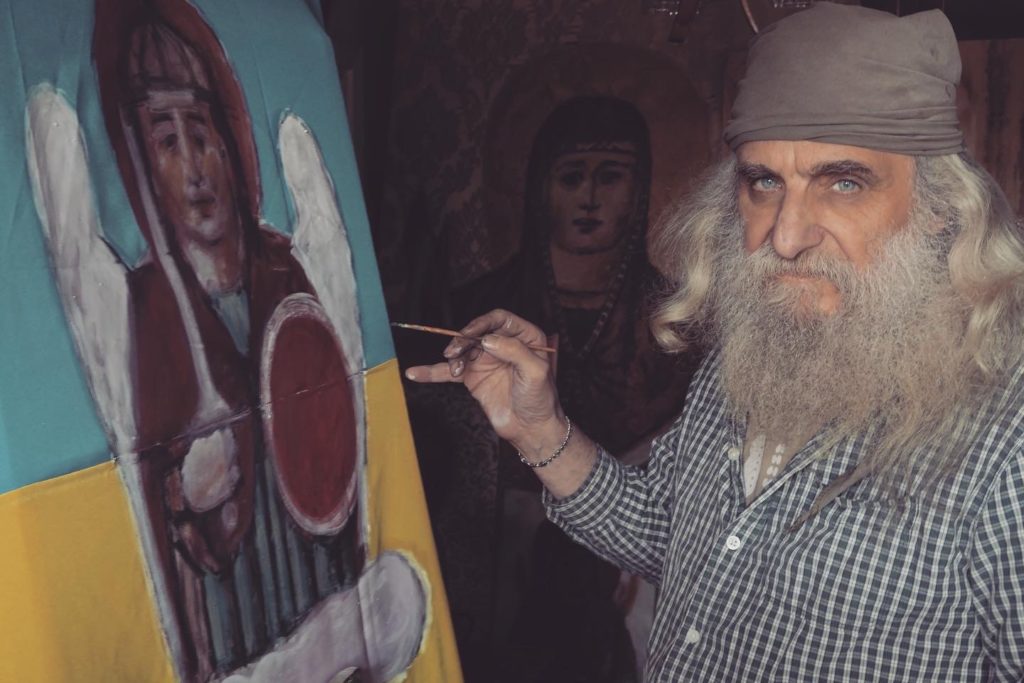
“The idea was to immerse ourselves in the daily life of these women and men who were using art as a means of escape and resistance.”
Damien Castera raised a cold, frosted glass of continental lager at a Bourdaines beach bar, and pointed to a roping lefthander spinning down a mini isthmus of Hossegor sand. A furnace-like offshore made it 35 degrees in the shade of an umbrella. Four feet of strong summer swell lining the Atlantic. From the channel, I had just watched the square-jawed, impossibly handsome goofyfoot stylishly rip the bag out of the rip bowl for the last hour. (For a taste of his talent, check him surfing Indonesia last year here.)

“It feels so strange to surf, and party, and enjoy all this freedom, when last week I was in the east of Ukraine in a war zone with bombs raining from the sky,” Castera said. “It feels like an alternative reality, and I’m still trying to process it all.”
Castera, 38, was a professional surfer who surfed in elite-level shortboard and longboarding competitions, but who in the last decade has turned his considerable talents to freesurfing exploration, writing, photography, and filmmaking. He is probably best known as the director of the 2018 film Water Get No Enemy, which documented child soldiers in Liberia who had swapped their assault rifles for surfboards.
Surf commentator and coach Vico Hamel described Castera as “one of the smartest surfers I have ever met, author of several books, and a member of the exclusive French Explorer Society. So this makes him a sexy, long-haired Indiana Jones. Nobody should be able to get that much juice!”
To those attributes, we can add empathy. With his keen interest in geo-political conflict, Castera had followed the Ukraine situation closely in the lead-up to the Russian invasion. When the war started he packed his van with medical supplies and undertook the four-day drive to the Romanian-Ukraine border. Initially, the plan was to drop the goods with an NGO, but when asked if he wanted to continue to Lviv, the western Ukraine city, he pushed on. Once there he was asked to provide long-read reports for a national French newspaper.

“I quickly realised most of the reporting was being done by war correspondents and so, understandably, was focused on all the death and destruction,” said Castera. “However I had met so many writers, artists, and musicians and I thought it was important to tell their stories because they were carrying on with their art.”
With very few filmmakers in the country, Castera decided to return to France, grab his camera and collaborator and DOP Michael Darrigarde, and return to make a documentary. The pair would spend two months traveling from Kyiv in the west to the Donbas region, following the war’s brutal frontline as it headed east.
“The idea of the film was to immerse ourselves in the daily life of these women and men who were using art as a means of escape and resistance,” he said. He filmed an old painter nicknamed “the last hippie of Galicia” who painted religious icons for the soldiers’ salvation.

He followed a group of graffiti artists requisitioned by the army to paint military cars. In the subway of the heavily shelled city of Kharkiv, where the majority of the remaining population lived underground for two months, he witnessed musicians performing concerts and the artists providing art lessons for the children. There was a deminer unit leader who used music to galvanise his men and a violinist who played the Four Seasons of Vivaldi in the middle of ruined buildings.
“In Kyiv, the people would dance and sing in the park between bombing sirens, and it was the same in Kharkiv, even though there were 100,000 bombs a day falling on the country. They were desperate to keep the positive, joyous aspects of their lives they had before the war because if they didn’t, it felt hopeless,” said Castera.
While this was Castera’s first experience in a war zone, he dealt with the danger of the situation by focusing on the job of telling the artists’ stories. He wasn’t fearful for his life but lived with a constant, gnawing feeling of tension in his stomach. It wasn’t until after the 2500-kilometre return trip home, and decompression on the beaches and bars of Hossegor that the fatigue set in, after what had been an intense few months.

Now editing the documentary which he hopes to show at the Sundance Film Festival later in the year, Castera’s experience has left him, like the artists he followed, with a sense of hope.
“The biggest imprint was to see 100 percent of the population defend their country in every single way. In the face of trauma and tragedy, the togetherness was incredible. Ukraine has a long and complicated history, and there used to be a real sense of West and East Ukraine as being very different. Now there’s real unity. The aim of this film is above all to capture the humanity that emerges from this chaos.”
